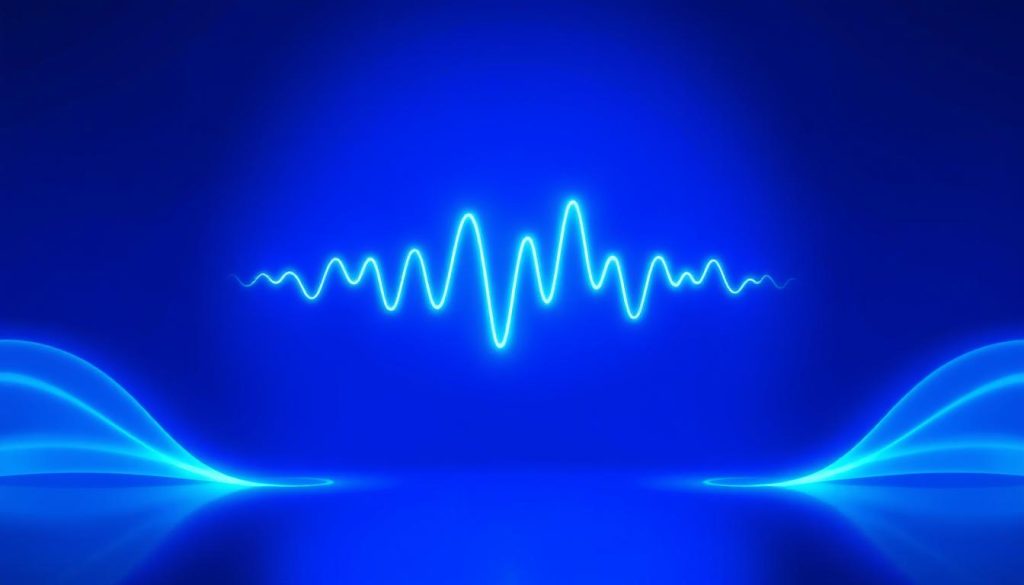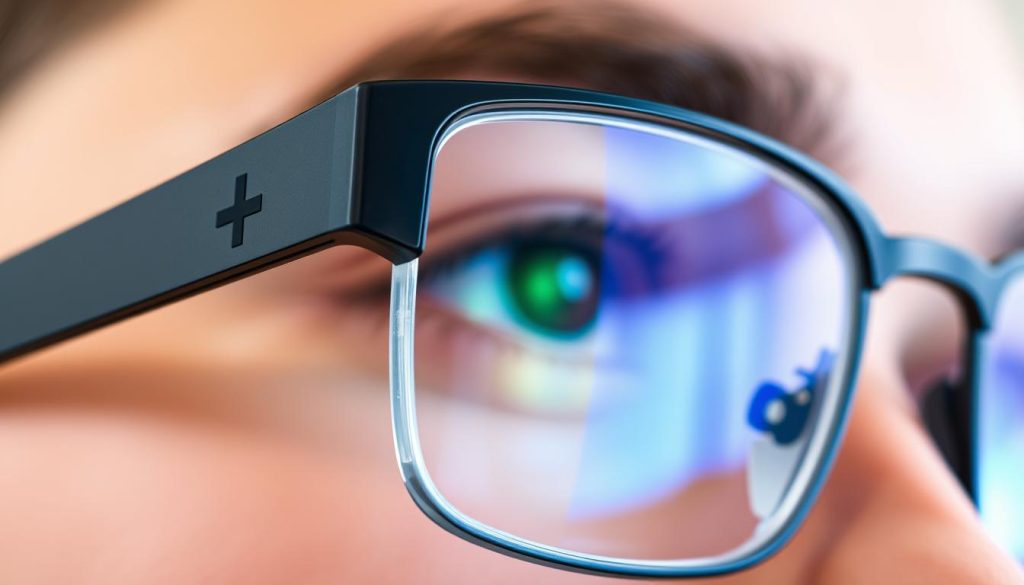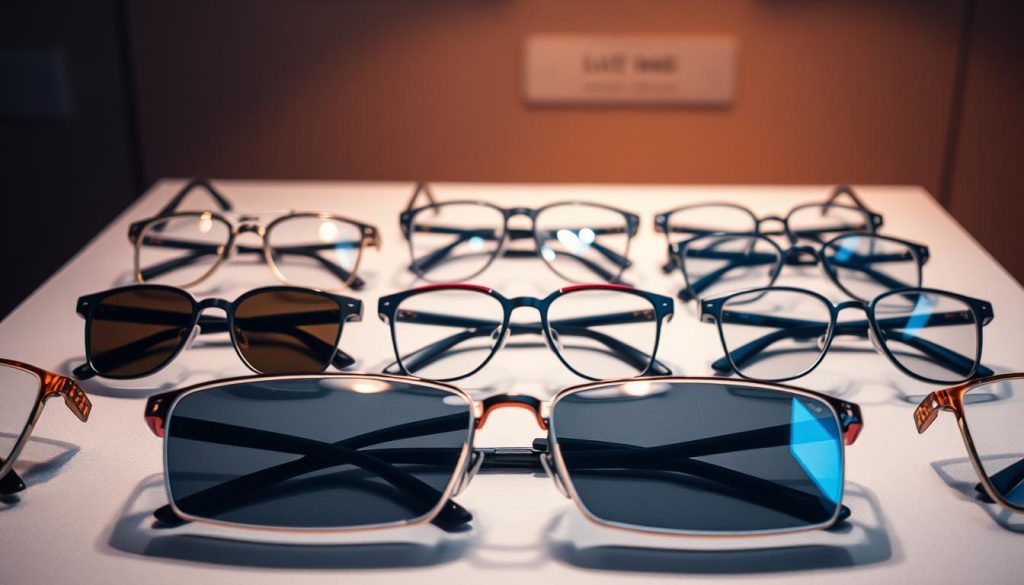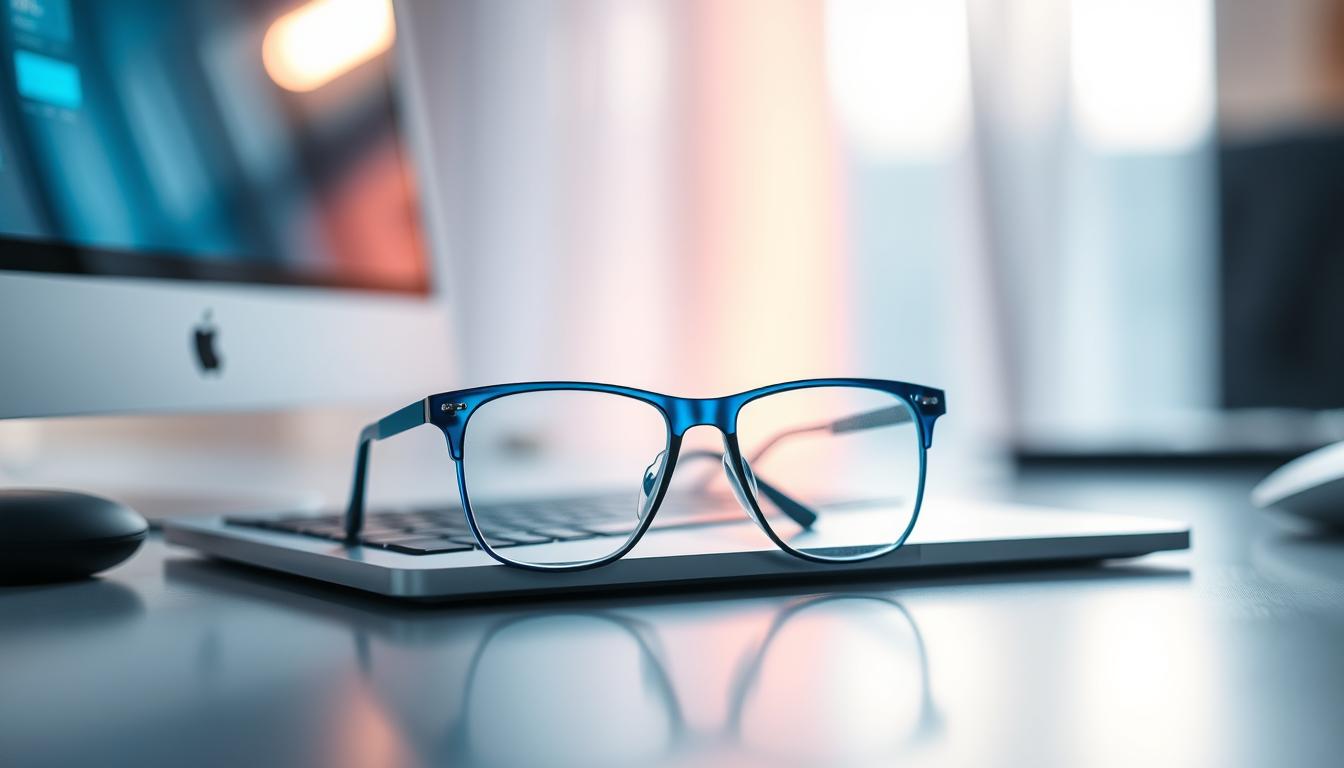Our digital world has changed how we live and work. Americans spend over seven hours daily staring at screens. This constant exposure raises important questions about eye health and comfort.
The eyewear industry has responded with specialized lenses for digital device users. Blue light blocking glasses have become a mainstream solution. The market now generates hundreds of millions in revenue annually.
These specialized lenses promise to reduce eye fatigue and improve sleep quality. However, the science behind their effectiveness is still debated. Medical professionals and optical experts continue to study their real-world benefits.
This comprehensive guide examines whether blue light blocking glasses are a smart investment for your vision. We’ll explore the research, weigh the benefits against potential drawbacks, and provide practical insights. Our goal is to help you make an informed decision about digital eye strain protection.
Understanding Blue Light and Its Effects
Blue light is a big topic in eye care. But what does it mean for your vision and health? It’s a high-energy light we’re all around every day. Knowing its effects is key before deciding if you need protective eyewear.
Our lives are filled with blue light from many sources. While some is good for us, too much can cause problems we’re still learning about.
What is Blue Light?
Blue light is a part of the visible light spectrum. It has wavelengths between 380 and 500 nanometers. This makes it one of the shortest and most energetic visible lights.
The sun naturally produces blue light, which is why the sky looks blue during the day. But now, artificial sources like LED screens and smartphones give us most of our blue light exposure.
Not all blue light is bad. Morning and daytime exposure helps us stay alert and keeps our circadian rhythms healthy. The problem is when we get too much, especially in the evening when we should be resting.

How Does Blue Light Affect Your Eyes?
Blue light goes deeper into your eye than other light. Unlike UV light, which your eye’s outer layers block, blue light reaches your retina directly.
This deep penetration causes several issues. Blue light scatters more, reducing contrast and causing glare. Your eyes have to work harder, leading to strain when using screens.
The high energy of blue light might also cause oxidative stress in retinal cells. Research is ongoing, but some studies suggest it could play a role in age-related eye problems.
Symptoms of Blue Light Exposure
Knowing the symptoms of blue light exposure can help you decide if you need eye fatigue relief. Common signs include dry, irritated eyes that feel gritty or burning after screen time.
Visual symptoms often develop slowly. You might see blurred vision, have trouble focusing on text, or be more sensitive to bright lights. Headaches often come with these eye problems, especially after long screen use.
Eye strain isn’t the only issue. Neck and shoulder tension also develops as you strain to see screens clearly. Many people unconsciously lean forward or adjust their posture when experiencing eye strain from blue light.
Sleep disruption is a big concern. Blue light in the evening can lower melatonin levels, making it hard to fall asleep and reducing sleep quality. This creates a cycle where poor sleep makes your eyes more sensitive the next day.
The Science Behind Blue Light Blocking Glasses
Blue light blocking glasses are a blend of materials science and vision care tech. They use special lenses that filter out certain light wavelengths. This keeps your vision clear while blocking harmful light.
The tech behind these glasses involves advanced coatings and materials. These coatings and materials absorb or reflect blue light. They let other light through, keeping your eyes safe.
How Do Blue Light Blocking Glasses Work?
Blue light glasses work by absorbing and reflecting specific light. They use coatings that grab onto blue light between 400-490 nanometers. This stops blue light from reaching your eyes.
When blue light hits the lens, it gets absorbed and turned into heat. This keeps your eyes safe. Some glasses also reduce glare, offering extra protection.

Another method uses interference to block blue light. It creates layers that cancel out blue light waves. This method keeps your vision clear and natural.
Types of Blue Light Blocking Glasses
There are many types of blue light glasses. Clear lenses block a bit of blue light, about 10-20%. They’re good for everyday wear without changing how you see colors.
Yellow lenses block more blue light, 30-60%. They’re great for those who work on computers a lot. They keep your vision natural while protecting your eyes.
Amber or orange lenses block a lot of blue light, over 90%. They’re best for late-night computer use or gaming. They change how you see colors but protect your eyes well.
Some glasses have gradient lenses. These change protection levels in different parts of the lens. They’re made for specific viewing needs, offering tailored protection.
Benefits of Wearing Blue Light Blocking Glasses
Blue light blocking glasses do more than protect your eyes. They make your daily life more comfortable and improve your health. These special lenses help with health issues caused by too much screen time. People notice big improvements in their daily life and health over time.
Using these glasses regularly helps a lot, especially for those who stare at screens all day. They offer quick comfort and long-term health benefits. This makes them a great choice for anyone who uses digital devices a lot.
Reduced Eye Strain
Digital eye strain is common for those who work on computers a lot. Blue light blocking glasses help a lot with this. They make your eyes feel less tired and reduce headaches and eye burning.
Less eye strain means you can focus better and work longer without feeling tired. This is especially good for people who work from home or study online.
Improved Sleep Quality
Blue light blocking glasses also help you sleep better. Looking at screens at night can make it hard to fall asleep. Wearing these glasses before bed helps keep your sleep cycle natural.
Studies show that blue light filtering at night can help you fall asleep faster and sleep better. People often sleep more soundly and wake up feeling more alert. This leads to better health and energy during the day.
Enhanced Visual Comfort
Wearing blue light blocking glasses makes looking at screens more comfortable right away. They reduce glare and make screens easier to see. People say they need to squint less and see better contrast.
These glasses also make it easier to handle other kinds of light. They help reduce eye strain from LED lights and fluorescent bulbs. This makes everyday activities more enjoyable and less stressful for your eyes.
There’s also a chance these glasses could protect your eyes in the long run. Some studies suggest they might help prevent damage to the retina. More research is needed, but this is another reason to consider them.
Don’t forget the mental benefits. Many people feel calmer and less stressed after using screens with these glasses. This helps them feel better overall and balance their work and personal life better.
Potential Downsides of Blue Light Blocking Glasses
Blue light blocking glasses have their downsides and controversies. They’ve become popular, but it’s important to consider the concerns before buying.
No product is perfect. Blue light glasses can affect your daily life and experience.
Effectiveness and Evidence
The science on blue light glasses is mixed. Some studies show they help with eye strain and sleep. But others find little difference compared to regular lenses or phone settings.
Eye doctors say the blue light from screens is small compared to sunlight. This makes some wonder if the dangers are too big.
Some symptoms blamed on blue light might have other causes. Poor blinking, bad posture, and vision problems are often ignored.

Blocking blue light at night might mess with your body’s natural rhythms. Blue light helps keep you alert during the day.
Possible Misconceptions
Many people think blue light glasses solve all eye problems. But it’s not that simple.
Tinted lenses can change how colors look. This is a big problem for graphic designers and photographers.
Some people get too used to wearing these glasses. They feel they can’t use devices without them. This can stop them from taking breaks.
People might rely too much on glasses instead of good screen habits. This misses other important eye health tips.
Marketing might make these glasses seem better than they are. Knowing the truth helps you decide if they’re right for you.
Choosing the Right Blue Light Blocking Glasses
Finding the right blue light blocking glasses is all about what you need. It’s about your work, gaming, or daily activities. Choose wisely to fit your digital life perfectly.
Key Features to Consider
The blue light filtering percentage is key. You can get from 10% to 99% blocking. Most people prefer 30-50% for computer work without losing color.
Lens tint is also crucial. Clear lenses are great for office work, keeping colors natural. Amber-tinted lenses block more blue light but change screen colors.
Comfort is vital for long wear. Look for lightweight frames, adjustable nose pads, and the right temple length. Bad fit can cause headaches and discomfort.

Anti-reflective coating quality is important. Good coatings last longer and block blue light better. Cheap ones may not last.
Prescription glasses with blue light filtering are convenient. They offer protection without needing separate glasses.
Recommendations for Different Uses
Office workers do best with clear or lightly tinted lenses. These have 20-40% blue light filtering. They’re comfortable for long hours.
Gamer glasses have strong filtering and special designs. They block 50-65% blue light and reduce eye strain. Wraparound designs also help block light.
Students and researchers need versatile glasses. Look for 35-45% filtering for screen and reading protection.
Evening users should choose amber-tinted glasses. These block 60-80% blue light to help sleep. They keep melatonin levels up.
Prices vary from under $20 to over $200. Focus on features that matter to you. Reading reviews helps find the best value.
Making the Investment: Are They Worth It?
Blue light blocking glasses are a smart choice for our digital lives. They help us manage screen time and eye health. Your decision depends on how much you use screens and your budget.
Cost vs Benefits Analysis
Blue light glasses cost between $15 and $100. This makes them affordable for many. They can save you money on eye care or sleep aids.
A good pair lasts years with care. It’s a small daily cost for comfort. Heavy screen users often feel better right away.
Personal Experiences and Testimonials
Many users say they sleep better after wearing these glasses. Office workers also feel less eye strain. These benefits vary by person.
Those with sensitive eyes see the biggest improvements. Casual users still enjoy the extra comfort. These glasses are a good addition to eye care.
They work best with regular breaks, good lighting, and posture. For those who use digital devices a lot, these glasses are a smart choice.

